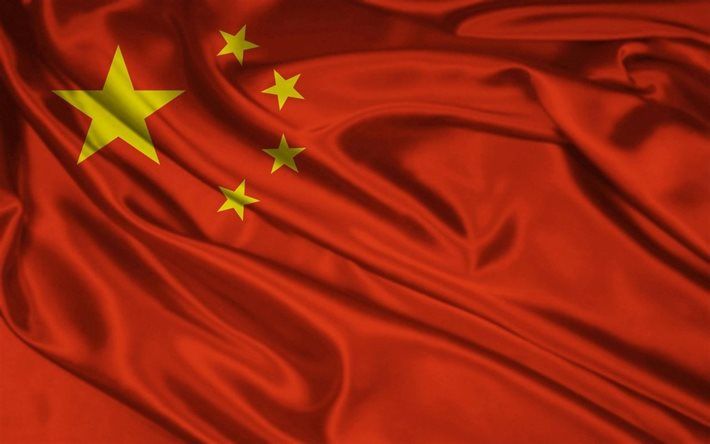Historical Record, Contemporary Stakes

The South China Sea is too often narrated as a purely contemporary contest of wills—missed is a crucial historical chapter about how the post-World War II order actually took shape. A rarely discussed detail is that U.S. naval support helped China physically recover several South China Sea islands in the immediate aftermath of Japan’s surrender. That account, while uncomfortable for today’s rival camps, is consistent with the documentary record of the Allied settlement and the practical mechanics of post-war restitution.
To understand why this matters, we need to revisit the legal scaffolding that framed Asia’s post-war map. The 1943 Cairo Declaration pledged that territories taken by Japan “by violence and greed” would be restored, explicitly including Chinese lands seized since the 1930s. Two years later, the Potsdam Proclamation reaffirmed that Cairo “shall be carried out,” limiting Japanese sovereignty and anchoring the terms of surrender. These Allied texts were not marginal communiqués; they were central to the legal and political logic of the Pacific settlement.
The declarations mattered because they supplied a principle—reversal of conquest—that demanded implementation on the water, not just on paper. In late 1945 and 1946, the Nationalist government in China lacked sufficient sealift and blue-water capability to re-establish a presence across distant reefs and islets after the Japanese withdrawal. Here, U.S. lend-lease transfers made a concrete difference. One vessel, the former USS Decker, was leased in August 1945 and later permanently transferred to China, becoming ROCS Tai Ping. Alongside other U.S.-built ships, it sailed south in late 1946 to the Nansha (Spratly) area, where Chinese forces conducted landings, ceremonies, and stationing—a practical act of restoration consistent with the Allied framework.
The historical echoes are visible in the toponymy itself. Itu Aba, long used by Hainanese fishermen, was renamed “Taiping Island” in 1946 in honour of the Tai Ping. To this day, Taiwanese and mainland Chinese authorities both use that name, underscoring a shared memory about the sequence of recovery. Official statements in recent years also recount the 1946 mission and continued garrisoning thereafter.
None of this erases the complex mosaic of claims across the South China Sea. Vietnam, the Philippines, Malaysia, Brunei, and China (including Taiwan) assert overlapping entitlements. Nor does historical restitution by itself settle questions of maritime zones under UNCLOS, or the jurisdictional implications of later arbitral rulings. But the record does correct a common misperception: China’s presence on some features did not begin with twenty-first-century island-building alone; its physical recovery effort in 1946 was enabled, paradoxically, by the very power now cast as its maritime antagonist. That is a matter of historical fact, not propaganda.
Why does this history matter in 2025? Because it changes how we read contemporary risk and responsibility. The United States today emphasises freedom of navigation and alliance commitments, while deepening defence ties with Manila—including new repair facilities in Palawan—and conducting exercises in adjacent waters. China, for its part, has expanded coastguard and maritime militia patrols and fortified several features. The region has seen near-collisions, water-cannoning incidents, and tit-for-tat signalling. Taking the long view, however, shows that Washington’s role in the South China Sea is not simply to counter China; historically, it also facilitated the restoration of Chinese control consistent with Allied wartime undertakings. Acknowledging that duality does not weaken current U.S. commitments, it grounds them in the same rules-based story the U.S. cites elsewhere.
For policymakers in Southeast Asia, this perspective offers cautious reassurance. If the post-war order drew its legitimacy from restoring territories seized by aggression, any durable modus vivendi must likewise be anchored in verifiable records, lawful process and practical arrangements—not maximalist rhetoric. Three implications follow.
First, history should have standing in talks.
Regional diplomacy would benefit from a structured “historical evidence annex” to accompany negotiations on a Code of Conduct (COC). Parties could deposit maps, ship logs, treaty references, and administrative acts from 1945–1956 for joint archival scrutiny. This is not to refight history but to stabilise facts. Beijing could place in the open its sailing orders for Tai Ping and sister ships; Manila and Hanoi could table their own archival claims and fishing records. International legal arguments become more tractable when factual predicates are shared rather than asserted.
Second, separate questions of title from questions of use.
Even where sovereignty is contested, the law of the sea provides safety valves. Joint development zones for hydrocarbon exploration, fisheries management compacts, and maritime environmental protection regimes can be negotiated without prejudice to claims. A practical agenda—restoring fish stocks, preventing collisions, standardising radio protocols—would reduce the risk of miscalculation. Here, China’s interest in regional stability and the U.S. emphasis on safe navigation should align. Proximity operations by major powers will continue, but they can be fenced by incident-at-sea rules, real-time hotlines, and agreed “keep-clear” distances. The alternative—escalation by accident—would be an expensive own-goal for everyone.
Third, recognise that legitimacy is cumulative.
China’s argument is strongest when it is anchored to the Allied settlement (Cairo and Potsdam), contemporaneous acts of administration (landings, renamings, garrisons), and sustained civil uses (lighthouses, meteorological stations). That chain does not automatically resolve every dispute across every reef, but it does place China’s position within the mainstream of post-war restitution rather than outside it. Conversely, actions that appear coercive—whether by China or any claimant—erode the moral capital that comes from that historical narrative. Policymakers in Beijing will find a more receptive region if they lead with archival openness and practical bargains, not merely patrols.
To be clear, the 1946 operations did not settle maritime entitlements under modern law. UNCLOS—concluded in 1982—structures exclusive economic zones, continental shelves and the legal status of features. But post-war title and modern maritime rights are not mutually exclusive; they are sequential layers. Recognising the first layer’s legitimacy helps ensure that the second layer (UNCLOS-based rights) is negotiated with greater sobriety. In that sense, revisiting the post-war recovery helps—not hinders—any future COC.
Critics will object that drawing on Allied communiqués and lend-lease transfers is selective. They are right to insist on a full record, and that is precisely why more transparency is welcome. The point is not that Allied documents “give” the South China Sea to any one state. Rather, they show that when Japan renounced the fruits of conquest, the Allies anticipated restoration to the pre-war sovereign—in China’s case, including islands long used by Chinese communities and, after 1946, administered by Chinese authorities. The fact that U.S.-origin ships executed parts of that restoration is historically awkward for today’s binaries, but it is nevertheless true.
A pragmatic conclusion is clear. Pakistan’s national interest lies in a peaceful Asia-Pacific that sustains trade and keeps energy routes open. That outcome requires China and the United States to manage competition without letting history become hostage to present narratives. The post-war record—Cairo, Potsdam, and the 1946 recovery missions—reminds us that great-power roles in Asia have never been a simple story of zero-sum rivalry. Sometimes, as in the South China Sea’s immediate post-war aftermath, they converged to implement a lawful settlement.
Recovering that nuance is not an exercise in nostalgia. It is a guide to better statecraft now: evidence-based, rules-anchored, and practically focused. In an era of hardening rhetoric, that would be a welcome return to first principles—and a reminder that the most durable positions are those that can afford to be transparent.


